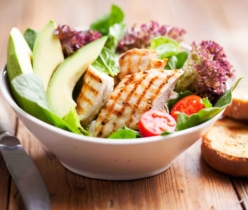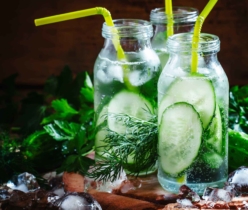Even as some of us might choose tap water over bottled water when given a choice, majority will rather stick with the clear plastic bottles promising us the premium taste of natural, fresh and more often than not, ‘enriched’ water right from the lap of the pristine valleys and springs of the Alps or the Himalayas or whatever that trips your trigger. Today, we will unveil why packaged or bottled water should not be a part of your lifestyle and even less so of your shopping list if you give even one rusty dime about the environment.
The Water – What exactly makes you shell out your money on packaged water? The idea that the water you are buying is healthier and more nourishing than the lowly tap water available even to peasants. Well, consider this, According to a study conducted (carried out in 2013, updated in May 2016) by Antae Group for International Bottled Water Association, it was found that to produce one liter of bottled water, a facility utilized 1.32 liter of tap water. 320 ml doesn’t seem like much though, does it?
While we could say it doesn’t, we can’t ignore the fact that approximately 35 bn water bottles were sold in 2016 in the USA alone (source). Considering how the advent of on-the-go culture in developing nations like China, India, Thailand, etc. is boosting the demands, the number will quite expectedly, be reaching the sky.
Now, let’s do the math. Upscaling 320 ml tap water lost per one liter bottled water for 35 bn liter of bottled water, brings us to staggering 11.2 bn liters of tap water lost in the process, in the USA, alone. 11.2 bn liter tap water, which is fit for human consumption, lost for packaged water which isn’t much different from tap water and does not add any value in terms of nutritional or health benefits. Also, you buy this bottled water at a cost of approximately ten to twenty times higher than what tap water costs. (The cost difference is particular to where you live and may vary accordingly by we’d say the base difference of ten times higher is big enough a difference.) Yeah, let that sink in. Now, let’s zoom out to the bigger picture. We don’t just lose water in producing packaged water; we also produce plastic waste, use infrastructure capacity to produce the bottles and process the water through various stages and hence incur fuel and electricity overheads. There, there! Don’t be overwhelmed just yet! Wait till we discuss each of the health issues associated with the bottled water. PET, which is used in plastic water bottles is non-biodegradable which means preserving poison forever in the landfills. Even landfills are not immune to risk as the Cadmium and lead in landfills leak into rainwater and drain into water bodies which in turn end up in kinds of seafood. PET also leaves residues of endocrine disruptors linked to cancer in the water when left in the heat for a long time. Most people assume that recycling PET will prevent us from its ills but the fact remains that recycling a toxin leads to more toxins in the environment. Long story cut short, Bottled water is a convenience which is too expensive for our health, environment and water availability. Most bottled or distilled water has no chlorine or if any, it is a much lower concentration than straight from the municipal tap.
Drinking chlorine is never good for a person: add a little natural occurring arsenic—arsenic is found in every fresh water supply: it’s excreted by deep-rooted foliages and/or trees; trace amounts of arsenic are in every municipal water supply—and a bit of ‘earth salt’ (also as a trace element inherent to freshwater), add a little dab will do ya’ fluoride (which is a very common additive to municipal tap water): and it’s leaded epoxy glue gunk.
It can show up in an X-ray of the intestinal tract (colon) as a grayish clump: it’s not cancer but it can appear to grow day to day by consuming more unfiltered tap water.
Otherwise, the ? should really include what kind of bottled water: ‘distilled’ from ‘steam distillation’ distilled water has no chlorine, no minerals/sediment, no arsenic (no cyanide) and it’s totally sanitized; it’s the best choice for safety, cleanliness, no risk of contamination or calamity.
Boil distilled from steam distillation water and it’s surgical grade water: the best thing about steam distillation water use is it allows the user to decide what organic trace elements should be included in a drink, wash or bath.
Adding organic green tea leaves or a choice coffee grind to distilled water renders a natural drink w/out taste or safety corruption: add some lemon or orange peel with honey, fennel, celery seed, sun-dried tomato strips (julienne for those wanting to curb appetite)…
When starting with pure no chlorine, no micro-particle, no minerals left behind distilled from steam distillation distilled water, a person has total control over exactly what kind of organic other elements he/she wants to include for the quests of health: with no risk of pipe silt or rust.
There are many choices of bottled waters: read labels, do research; all bottled water—even if it was originally processed from a municipal fresh water supply—has been filtered; it’s all distilled water but it’s not all distilled by steam distillation distilled water…
The starting cost of a decent steam distillery unit is about $400-$600: but that’s just the threshold of the money pit.
Bottom line: many people buy bottled water as a matter of convenience and then cost efficiency.




